Nestled in the heart of Oman’s capital, Muscat, Al Mirani Fort stands as a testament to the city’s rich historical tapestry. Overlooking the serene waters of the Gulf of Oman, this formidable structure has witnessed centuries of change, from Portuguese colonization to Oman’s renaissance. In this article, we delve deep into the history, architecture, and significance of Al Mirani Fort, offering readers a comprehensive understanding of its place in Omani heritage.
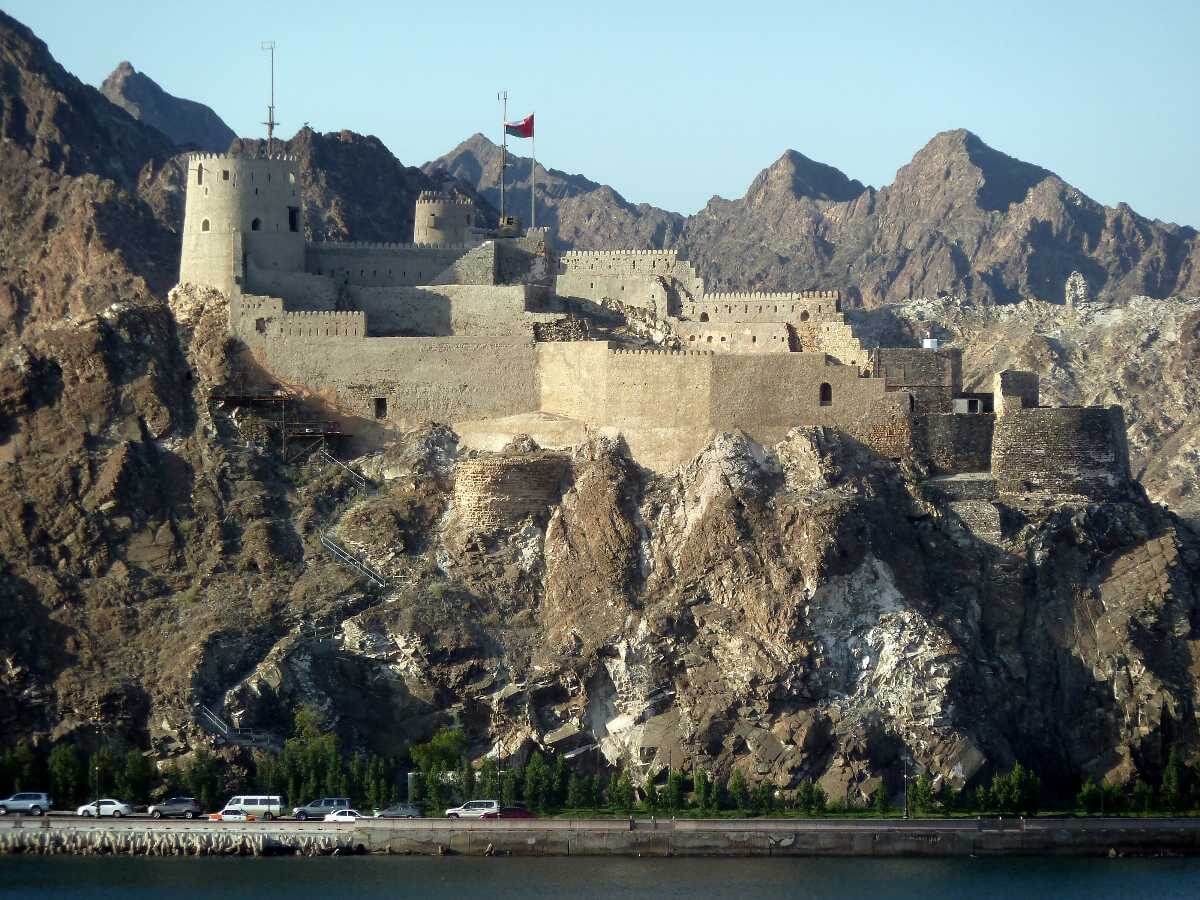
Historical Background of Al Mirani Fort
Al Mirani Fort, alongside its sister fort, Al Jalali, stands as a monumental guardian of Muscat’s harbor, holding a key position in Oman’s rich history. Originally constructed before the Portuguese invasion, this fort has witnessed centuries of conflict, transformation, and resilience. In 1587, it was rebuilt by the Portuguese, marking a crucial turning point in Oman’s colonial past and its ongoing struggle for independence. This fort not only symbolizes the power struggles of the region but also highlights Muscat’s pivotal role in global maritime trade during the Age of Exploration.
Pre-Portuguese Era
Long before the Portuguese arrived, Muscat was already a prosperous and bustling port city, an essential hub for trade and commerce in the Arabian Peninsula. The city’s strategic location along vital sea routes meant it was frequently targeted by foreign powers seeking to control the lucrative trade in spices, textiles, and other treasures. Al Mirani Fort, in its earliest incarnation, was constructed as part of Muscat’s first line of defense, serving as a sentinel over the harbor. Its original design reflected the foresight and ingenuity of Omani builders, crafted to thwart naval invasions and protect the city’s economic lifeblood. As a lookout point perched on a rocky outcrop, it enabled the city’s defenders to spot any approaching ships from miles away, ensuring the safety of the port for centuries.
Portuguese Reconstruction
In the late 16th century, the Portuguese Empire sought to control the vital maritime routes between Europe, Africa, and Asia, and Muscat was a prize they could not ignore. In 1587, recognizing the fort’s strategic value, the Portuguese rebuilt Al Mirani Fort, transforming it into a formidable military bastion. Their reconstruction introduced advanced military architecture that was both a statement of power and a tactical necessity. The fort was outfitted with the latest artillery of the time, solidifying Portuguese dominance in the region. As the Portuguese constructed not only defensive walls but also bastions, they ensured that the fort was equipped to withstand and repel any attacks, be it from sea or land. The Portuguese fortification left an indelible mark on Muscat’s architectural heritage, blending European military techniques with the traditional Omani aesthetic. Through this reconstruction, Al Mirani Fort not only stood as a symbol of occupation but also became a key component in the broader geopolitical struggles of the era.
Post-Portuguese Developments
When the Portuguese were eventually expelled from Oman in the 17th century, Al Mirani Fort was not abandoned but rather adapted to serve the needs of the new Omani rulers. The fort continued to play a vital role in safeguarding Muscat and its harbor. Over the years, it underwent several modifications, reflecting the evolving military strategies and technological advancements of the time. The Omani rulers, keen on protecting their sovereignty, strengthened the fort’s defensive capabilities, ensuring that it remained a symbol of resilience and military prowess. Today, Al Mirani Fort stands not only as a monument to Oman’s turbulent colonial history but also as a testament to the enduring spirit of the Omani people and their strategic importance in the region.
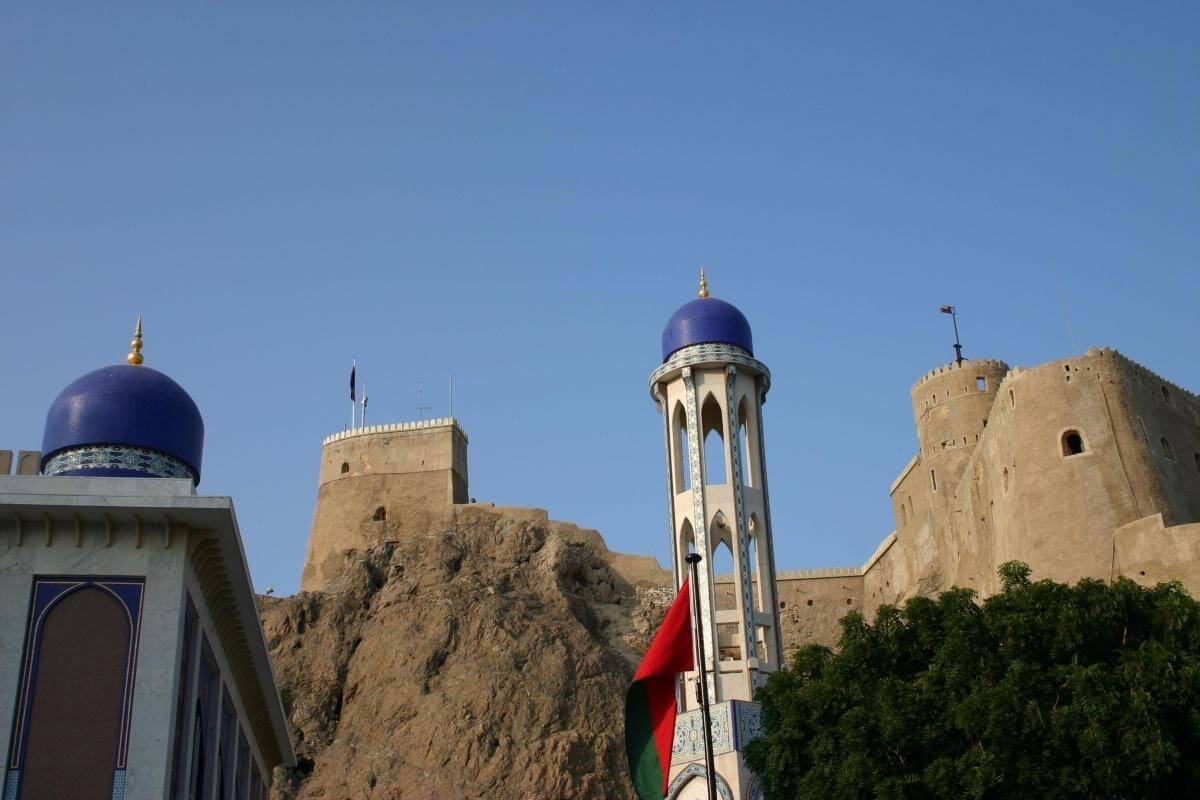
Architectural Features of Al Mirani Fort
Al Mirani Fort is a stunning example of military architecture, blending indigenous Omani design with the European influences brought by the Portuguese. Its construction reveals much about the strategic importance of Muscat, and the fort’s design reflects the confluence of two distinct cultures, creating a unique and fascinating structure. As you stand before it, one can easily sense the fusion of utility and artistry, as the fort’s practical purpose is enhanced by the beauty of its architectural features.
Structural Layout
Positioned atop a rocky outcrop, Al Mirani Fort’s location alone speaks volumes about its intended purpose. The natural terrain was expertly utilized, with the fort being constructed in such a way that it maximized its defensive advantages. Its multi-tiered structure includes imposing bastions and watchtowers that offer panoramic views of the harbor and the surrounding landscape. The layout of the fort allows defenders to spot any approaching threats from great distances, with hidden passages and narrow walkways providing access to various sections of the fort. This intricate design allowed for swift movement of troops, making it easier to respond to attacks. The fort’s elevated position not only strengthened its defensive capabilities but also made it a symbol of power and vigilance, overseeing the lifeblood of Muscat.
Defensive Mechanisms
Perhaps the most striking feature of Al Mirani Fort is its pioneering use of cannons, making it the first fort in Oman to incorporate artillery into its defenses. The Portuguese, with their naval expertise, introduced these powerful weapons, positioning them strategically along the fort’s walls. The cannons were carefully placed to provide overlapping fields of fire, ensuring that the fort could defend against any naval assault. The fort’s design, with its strong walls and elevated vantage points, allowed for precise targeting of approaching ships, protecting the harbor and the city from potential invasions. The use of artillery at Al Mirani is a testament to the forward-thinking military strategies of the time, showcasing the fort’s role as a modern fortress in an age of technological innovation.
Aesthetic Brilliance in Military Design
While Al Mirani Fort’s primary function was military, its design also reflects the artistic sensibilities of its creators. The fort’s aesthetic features are a blend of traditional Omani and Portuguese architectural elements, resulting in a harmonious fusion of form and function. The use of local stone gives the fort a distinct regional flavor, while intricate carvings and decorative details offer a glimpse into the cultural richness of the time. These ornamental touches elevate the fort from merely a defensive structure to a work of architectural art, showcasing the skill and craftsmanship of the builders. The strategic use of light and shadow, combined with the fort’s commanding views, adds to its imposing presence, creating a structure that is as visually stunning as it is historically significant.
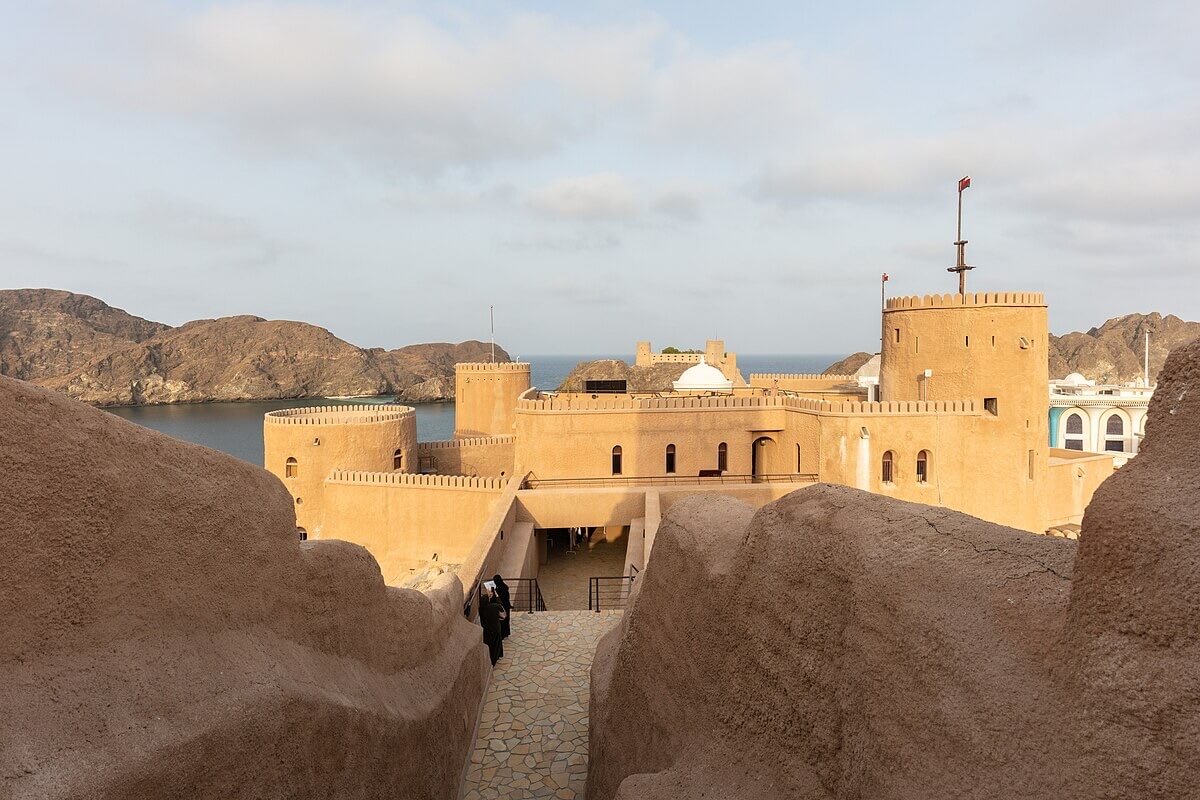
Al Mirani and Al Jalali – Twin Guardians of Muscat
Al Mirani Fort, alongside its sister fortress, Al Jalali, has long stood as a twin sentinel over Muscat’s harbor, symbolizing not just the city’s strategic importance but also its resilience in the face of foreign invasions. These two mighty fortifications have withstood the test of time, guarding the city’s access points to the sea and playing an integral role in shaping Muscat’s history as a maritime hub of immense significance.
Strategic Positioning
The strategic positioning of Al Mirani and Al Jalali Forts was a masterstroke of military planning. Positioned on opposite sides of the harbor entrance, they created a nearly impenetrable crossfire zone. Any enemy attempting to breach the harbor would find themselves under fire from both forts, making a naval assault almost futile. Perched high above the waters, these forts had commanding views over the surrounding seas, ensuring that any approaching ships could be detected from miles away. This vantage point provided Muscat’s defenders with the time and foresight to prepare for any threat, whether from land or sea, reinforcing the city’s impenetrability and readiness.
Coordinated Defense
The layout and design of Al Mirani and Al Jalali were carefully engineered to enable synchronized defense strategies. In times of conflict, these forts were not isolated structures but rather parts of a coordinated system of protection. With their close proximity to one another, the forts were able to communicate through signals and coordinate their artillery fire, creating a unified and powerful front against invaders. This strategic collaboration ensured that no single attack could easily undermine the city’s defenses. The forts’ mutual support made them a formidable barrier, demonstrating the military ingenuity and foresight of Muscat’s defenders.
Cultural Significance
Beyond their military purpose, Al Mirani and Al Jalali have evolved into powerful symbols of Muscat’s cultural identity and resilience. Together, they embody the city’s capacity to adapt, evolve, and fortify itself against the challenges of foreign domination while preserving its rich cultural heritage. Over the centuries, these fortresses have witnessed numerous battles, occupations, and changes, yet they remain steadfast in representing Muscat’s enduring spirit. Today, these forts stand not only as reminders of past conflicts but also as icons of Oman’s deep-rooted history and its strategic importance in the region.
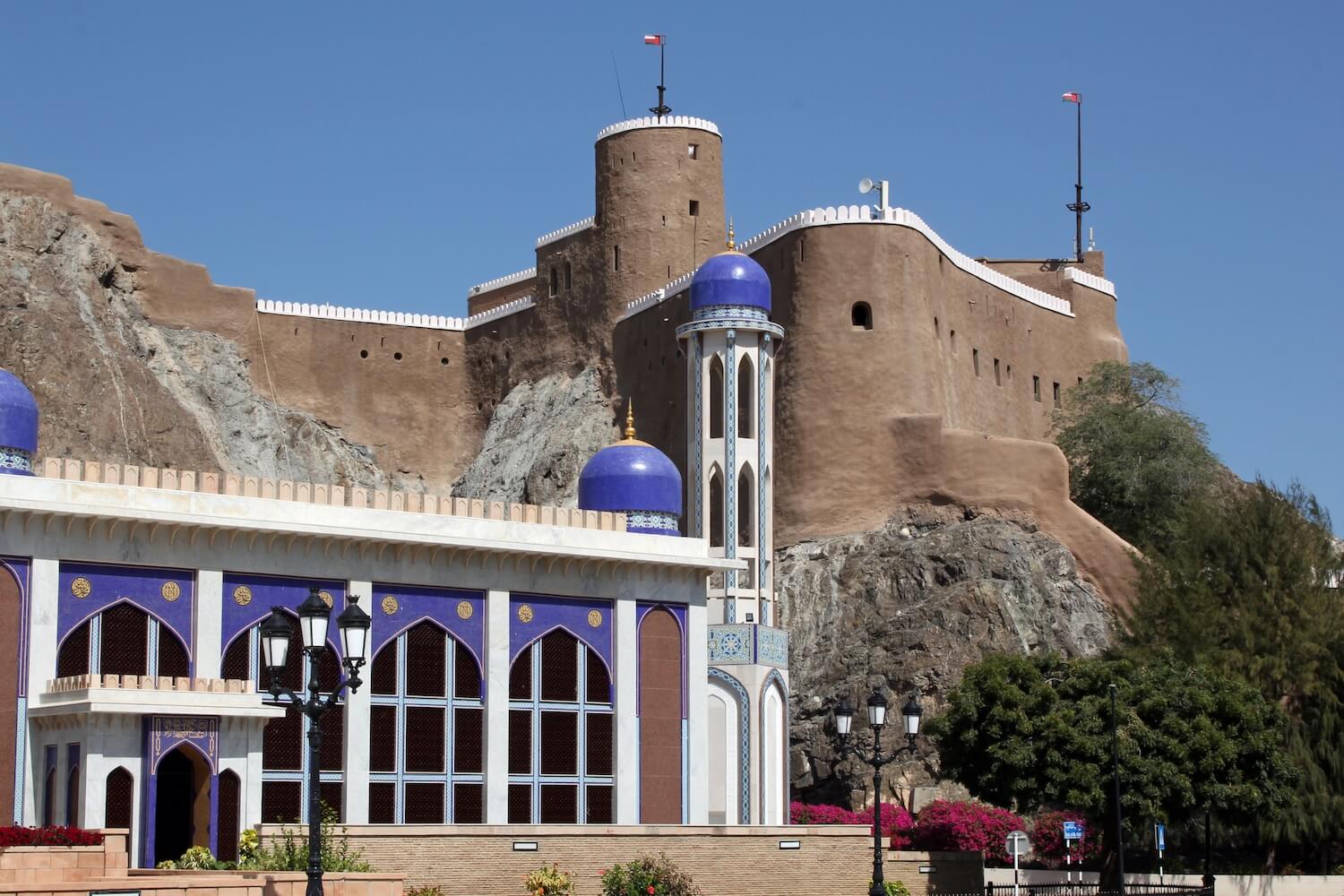
Visiting Al Mirani Fort Today
Although Al Mirani Fort is not open to the public, its impressive exterior and commanding presence continue to captivate both locals and visitors. The fort’s towering structure and its role in the city’s history provide a tangible link to Muscat’s storied past. Even from a distance, the fort is a captivating sight, offering a glimpse into the city’s military and cultural legacy.
Viewing Points With Scenic Perspectives
For those wishing to admire the fort, there are several excellent viewing points around the harbor. The Muttrah Corniche, in particular, provides sweeping panoramic views of the fort, allowing visitors to take in its commanding position while reflecting on its historical importance. The fort’s striking appearance against the backdrop of Muscat’s skyline offers ample opportunities for photography, providing a moment of connection with Oman’s rich past. These vantage points invite contemplation of the fort’s role in shaping the city’s identity and offer a chance to appreciate the sheer scale of its historical significance.
Nearby Attractions
The area surrounding Al Mirani Fort is rich with cultural and historical landmarks that offer a deeper understanding of Oman’s heritage. Just a short distance away, the Sultan’s Palace stands as a modern counterpart to the fort, showcasing Omani architecture that blends tradition with contemporary design. For those seeking further insight into Oman’s history, the National Museum is a treasure trove of artifacts and exhibitions that illuminate the nation’s heritage, from its ancient civilizations to its modern-day transformations. These nearby attractions complement a visit to Al Mirani, offering a well-rounded cultural experience that ties together the old and the new in Muscat.
Cultural Events – Celebrating Omani Heritage
Muscat is home to a vibrant calendar of cultural events and festivals that celebrate Omani traditions and artistry. Attending these events offers visitors the chance to dive deeper into the living heritage of Muscat and Oman as a whole. Whether it’s a festival celebrating traditional Omani music, dance, or cuisine, these events provide a richer context for landmarks like Al Mirani Fort. They reveal how these structures are not relics of the past but active symbols of a living, evolving culture that continues to honor its roots while embracing the future. By experiencing Muscat’s cultural events, visitors gain a fuller appreciation of the historical significance of Al Mirani and the enduring spirit of the Omani people.
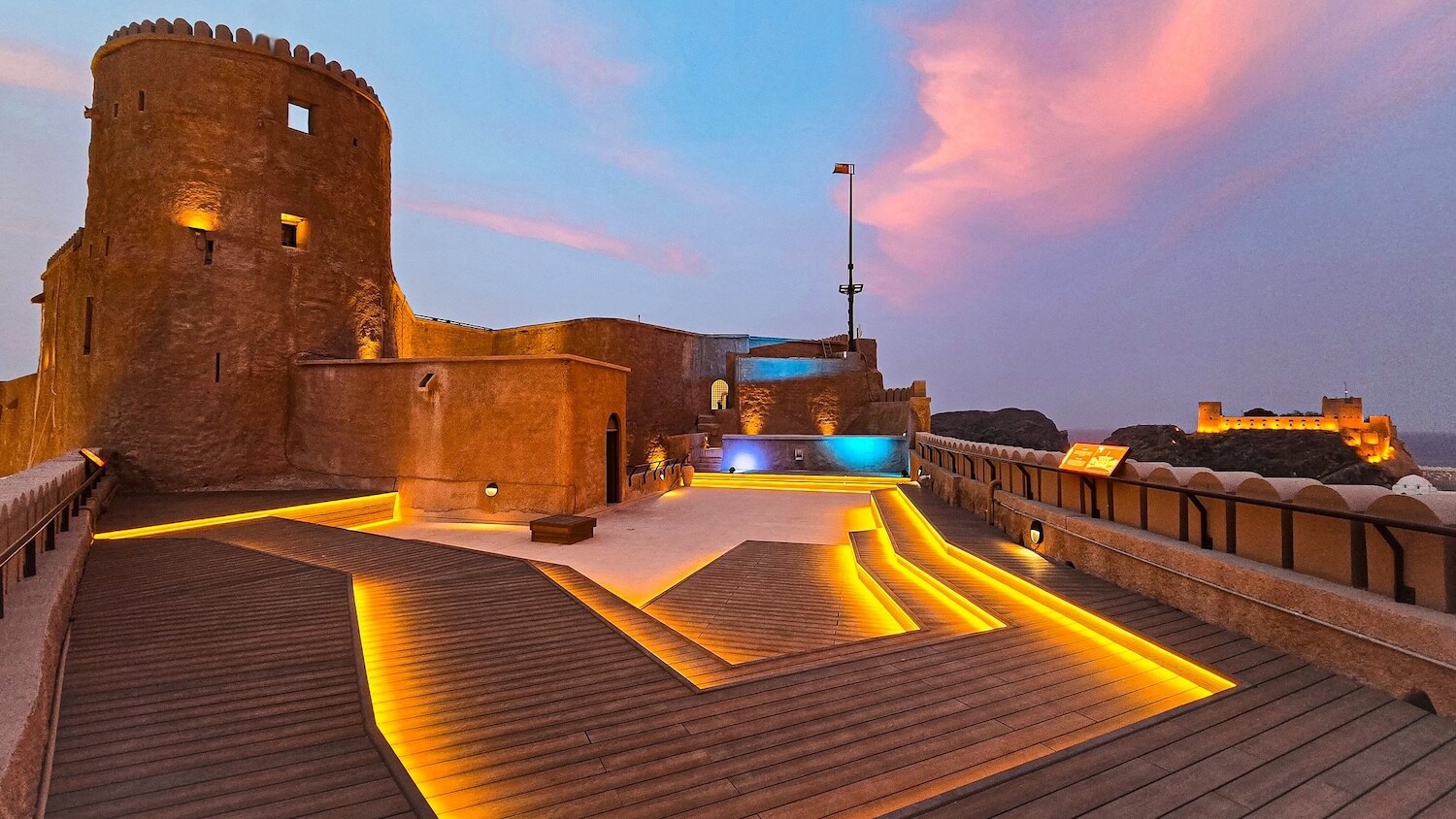


0 Comment